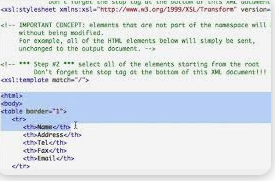How Does a Market Order Work in Forex Trading?
A market order in Forex trading is an instruction to buy or sell a currency pair immediately at the current market price. This type of order ensures that the transaction is executed almost instantaneously, making it the go-to choice for traders who need to enter or exit positions quickly. Market orders are commonly used for their simplicity and speed, particularly when dealing with highly liquid currency pairs.
When a trader places a market order, it interacts with the best available bid or ask prices, depending on whether they are buying or selling. The main advantage of a market order is its execution speed, which is crucial in fast-moving markets. However, one downside is that the final execution price may differ slightly from the quoted price due to market volatility and the speed of price changes.Market orders are particularly effective in markets with high liquidity, such as major currency pairs (e.g., EUR/USD, GBP/USD). In these markets, the spread (difference between bid and ask prices) is typically tight, which minimizes the risk of significant price changes between order placement and execution. Conversely, in less liquid markets, traders might experience slippage, where the executed price differs from the intended price due to insufficient market depth.
What Is a Limit Order in Forex and When Should You Use It?
A limit order in Forex trading is an order to buy or sell a currency pair at a specific price or better. This type of order allows traders to set a maximum price they are willing to pay (for buy orders) or a minimum price they are willing to accept (for sell orders). Limit orders provide greater control over the execution price, making them ideal for traders who wish to avoid paying more than a set amount or selling for less than a desired price.
For example, if the current market price of EUR/USD is 1.1800, but a trader believes the price will drop to 1.1750 before rising again, they might place a buy limit order at 1.1750. The order will only be executed if the market price reaches 1.1750 or lower. Similarly, a sell limit order is used to sell a currency pair at or above a specified price, ensuring the trader gets a favorable price.
Limit orders are particularly useful in volatile markets where prices can fluctuate rapidly. They allow traders to plan their entries and exits more strategically, ensuring they only trade at prices that align with their analysis and risk management strategies. However, one potential drawback is that the market may not reach the specified price, resulting in the order not being executed. This could mean missing out on a trading opportunity if the price moves favorably but doesn’t hit the exact limit order level.
How Does a Stop Order Differ from a Limit Order in Forex?
A stop order, often referred to as a stop-loss order, is an order to buy or sell a currency pair once it reaches a specified price, known as the stop price. Unlike limit orders, which aim to secure a specific price or better, stop orders are designed to trigger a market order when the stop price is reached, ensuring that the trader enters or exits a position promptly.
The primary purpose of a stop order is risk management. For instance, a stop-loss order can protect a trader from significant losses by automatically closing a position if the market moves against them. If a trader buys EUR/USD at 1.1800, they might set a stop-loss order at 1.1750. If the price falls to 1.1750, the stop order converts to a market order and closes the position, limiting the trader’s loss.
Stop orders can also be used to enter the market at a more favorable price in what is known as a stop-entry order. For example, a trader might place a buy stop order above the current market price if they believe the price will rise once a certain resistance level is broken. Once the stop price is reached, the buy stop order becomes a market order, and the position is opened.
In summary, while limit orders seek to achieve a specific price or better, stop orders aim to manage risk and ensure timely execution at the market price once a predetermined level is reached. Both order types are essential tools in a trader’s arsenal, each serving distinct purposes in different trading scenarios.
What Is a Stop-Loss Order and How Can It Protect Your Investments?
A stop-loss order is a crucial tool in Forex trading designed to limit potential losses and protect investments. This type of order is set to automatically sell a security when its price falls to a predetermined level, thereby capping the loss that an investor might incur. For example, if you buy a currency pair at $100 and set a stop-loss order at $95, the position will be sold if the price drops to $95, ensuring that losses do not exceed $5 per unit.
One of the key advantages of using a stop-loss order is that it eliminates the need to constantly monitor the market. Once set, the order will execute automatically, allowing investors to focus on other tasks or investments without the constant worry of watching price movements. This can be particularly useful during times of market volatility or when the investor is unable to monitor their investments closely.
Stop-loss orders also help remove emotional decision-making from trading. By setting a predefined exit point, traders can avoid the common pitfall of holding onto losing positions in the hope that prices will rebound. This discipline can prevent small losses from becoming larger ones, making stop-loss orders an essential part of a risk management strategy in Forex trading.
How Does a Take-Profit Order Work in Forex Trading?
A take-profit order is an automated trading tool used to lock in profits once a trade reaches a specific price level. When the price of a currency pair hits the take-profit level, the order automatically closes the position, securing the gains made from the trade. This type of order is particularly useful for traders who have a clear profit target and want to ensure that they exit a trade once this target is reached.
For example, if a trader buys EUR/USD at 1.1000 and sets a take-profit order at 1.1050, the position will automatically close when the price rises to 1.1050, ensuring that the trader locks in a profit of 50 pips. This helps traders to systematically secure profits without having to continuously monitor the market.
The main benefit of a take-profit order is that it allows traders to capitalize on favorable price movements without second-guessing their decisions or being swayed by market noise. This automation helps in maintaining trading discipline and ensures that profits are realized as planned. However, it is essential to set realistic take-profit levels based on market analysis to avoid premature exits from potentially more profitable trades.
What Are Trailing Stop Orders and How Do They Function?
Trailing stop orders are a dynamic form of stop-loss orders that move with the market price, allowing traders to protect their profits while still keeping their positions open. Unlike a regular stop-loss order that remains fixed, a trailing stop adjusts itself based on the movement of the market price. This means that if the market price moves in a favorable direction, the trailing stop price moves along with it, locking in profits as it goes.
For instance, if a trader sets a trailing stop order 10 pips below the current market price of a currency pair that is moving upwards, the stop price will follow the market price upwards by maintaining the 10-pip gap. If the market price reaches 1.2000, the trailing stop will move to 1.1990. Should the market then reverse and the price drops to 1.1990, the trailing stop order will trigger, and the position will be sold, securing the profit gained up to that point.
Trailing stop orders are particularly beneficial in volatile markets where prices can fluctuate significantly. They allow traders to stay in the market and benefit from favorable trends without constantly adjusting their stop levels. This not only helps in maximizing profits but also in protecting against sudden market reversals .
How Can One Use Pending Orders Effectively in Forex Trading?
Pending orders are essential tools in Forex trading, allowing traders to automate their strategies by setting specific conditions for trade execution. This reduces the need for constant market monitoring and helps to manage risk and capitalize on market movements effectively. Here’s how you can use pending orders effectively:
1. Types of Pending Orders:
- Buy Limit Order: This order is placed below the current market price. It executes when the market price falls to the specified level, allowing you to buy at a lower price.
- Sell Limit Order: This order is placed above the current market price. It executes when the market price rises to the specified level, enabling you to sell at a higher price.
- Buy Stop Order: This order is placed above the current market price. It executes when the market price exceeds the specified level, useful for entering long positions in rising markets.
- Sell Stop Order: This order is placed below the current market price. It executes when the market price falls below the specified level, ideal for entering short positions in falling markets.
2. Benefits of Using Pending Orders:
- Automation: Pending orders allow you to automate your trading strategy, reducing the need for constant market oversight. Once set, these orders will execute automatically when market conditions are met.
- Precision: By setting specific entry and exit points, you can execute trades at desired price levels, enhancing accuracy in your trading decisions.
- Risk Management: Pending orders help manage risk by allowing you to set stop-loss and take-profit levels, ensuring you exit trades at predetermined points to limit losses or secure profits.
3. Strategies for Effective Use:
- Market Analysis: Conduct thorough market analysis before placing pending orders. Identify key support and resistance levels and use technical indicators to determine optimal entry and exit points.
- Order Placement: Choose appropriate order types and set realistic price levels to avoid premature triggers or missed opportunities. Placing orders too close to current prices can lead to frequent stop-outs, while placing them too far can reduce profitability.
- Adjusting Orders: Regularly review and adjust pending orders based on market developments. This includes updating entry and exit levels to align with changing market conditions and moving stop-loss orders to protect profits.
What Is an OCO (One Cancels the Other) Order in Forex?
An OCO (One Cancels the Other) order is a combination of two conditional orders placed simultaneously. If one order is executed, the other is automatically canceled. This type of order is particularly useful for traders who want to manage their positions by setting both a target price for profit-taking and a stop-loss level for risk management.
1. How OCO Orders Work:
- Setting Up OCO Orders: When placing an OCO order, you define two price levels: one for the buy (or sell) limit order and one for the buy (or sell) stop order. For example, if you are trading EUR/USD currently at 1.2000, you might place a buy limit order at 1.1950 and a sell stop order at 1.2050. If the market price reaches 1.1950, the buy limit order executes, and the sell stop order is canceled, and vice versa.
- Managing Risk and Profit: OCO orders help in managing trades by automating the execution process based on market movements, thus mitigating risk and ensuring trades are executed at favorable conditions. They are ideal for scenarios where market direction is uncertain, allowing traders to capitalize on price movements regardless of the direction.
2. Advantages of OCO Orders:
- Risk Management: By placing both a stop-loss and a take-profit order, OCO orders help manage potential losses while securing profits. This dual approach ensures that trades are closed out at desired price points, reducing exposure to market volatility.
- Flexibility: OCO orders provide flexibility by allowing traders to plan for multiple market scenarios. This is particularly useful during high volatility periods or when significant news events are expected.
3. Implementation Tips:
- Strategic Placement: Place OCO orders around key support and resistance levels to maximize the probability of successful execution. Analyze market trends and set realistic price targets based on historical price movements and technical analysis.
- Regular Monitoring: Even though OCO orders automate trade execution, it is important to monitor market conditions and adjust orders as necessary to adapt to changing market dynamics.
What Are the Advantages and Disadvantages of Each Forex Order Type?
1. Market Orders:
- Advantages:
- Immediate execution at the current market price.
- Suitable for highly liquid markets, ensuring fast entry and exit.
- Useful for quick trades in volatile markets.
- Disadvantages:
- No control over the execution price, which can lead to slippage in fast-moving markets.
- Higher potential for unfavourable price execution during periods of high volatility.
2. Limit Orders:
- Advantages:
- Precise control over the entry and exit price.
- Prevents buying at too high a price or selling at too low a price.
- Can be used to enter the market at favorable levels during retracements.
- Disadvantages:
- No guarantee of execution if the market does not reach the specified price.
- May miss profitable trading opportunities if the market moves quickly in the desired direction but does not trigger the order.
3. Stop Orders:
- Advantages:
- Effective for entering trades in trending markets, capturing momentum.
- Helps in managing risk by setting predetermined exit points (stop-loss orders.
- Disadvantages:
- Can result in execution at less favorable prices during volatile market conditions.
- Potential for triggering during temporary price spikes, leading to premature exits.
4. OCO Orders:
- Advantages:
- Combines the benefits of stop and limit orders, providing comprehensive risk management.
- Automatically cancels the opposite order once one is executed, streamlining trade management.
- Disadvantages:
- Complexity in setting up correctly, requiring careful planning and execution.
- May not be available on all trading platforms or with all brokers
Conclusion
Understanding and effectively utilizing various Forex order types is crucial for successful trading and risk management. Market orders offer immediate execution, making them ideal for quickly entering or exiting positions in highly liquid markets, although they carry the risk of slippage during volatile periods. Limit orders provide precise control over trade entry and exit points, preventing the execution at unfavorable prices but may result in missed opportunities if the market doesn’t reach the specified levels.
Stop orders, including stop-loss and take-profit orders, are essential tools for managing risk and protecting profits by setting predetermined exit points based on market movements. Trailing stop orders enhance this by dynamically adjusting to favorable market conditions, locking in profits while still allowing for potential gains.
Pending orders, such as buy and sell limit orders, and stop orders, allow traders to automate their strategies, ensuring trades are executed at optimal price levels without the need for constant market monitoring. This automation helps maintain trading discipline and reduces the impact of emotional decision-making .OCO orders further streamline trade management by combining conditional orders to handle multiple market scenarios efficiently.
Each order type has its advantages and disadvantages, and choosing the right one depends on the trader’s strategy, market conditions, and risk tolerance. By mastering these tools, traders can improve their precision, manage risk effectively, and enhance their overall trading performance in the dynamic Forex market.
In conclusion, the strategic use of different Forex order types is fundamental to achieving trading success. Traders should carefully analyze market conditions, set realistic expectations, and continuously adapt their strategies to optimize their use of these orders. This comprehensive approach will help them navigate the complexities of the Forex market, capitalize on opportunities, and protect their investments effectively.
Unlock the secrets to mastering Forex trading with our latest blog on Forex Order Types! 📊 Dive deep into the essential tools and strategies, from market orders to pending orders, and learn how to effectively manage risk and maximize profits. Whether you’re a novice or an experienced trader, this guide will equip you with the knowledge to navigate the dynamic Forex market with confidence. 💡✨ #ForexTrading #FinancialMarkets #RiskManagement #ForexStrategies #TradingTips #ProfessionalGrowth
🌟 Ready to elevate your Forex trading game? Check out our comprehensive blog on Forex Order Types! 🌟 Learn about market orders, limit orders, stop-loss strategies, and more. Discover how to use these tools effectively to manage risks and secure your profits in the fast-paced Forex market. Perfect for traders at all levels! 📈💼 #ForexTrading #InvestSmart #MarketOrders #FinancialFreedom #TradingStrategies #RiskManagement
📈💰 Master the art of Forex trading with our latest blog on Forex Order Types! Dive into the world of market orders, limit orders, and stop-loss strategies to manage your risks and maximize your profits. Perfect for beginners and seasoned traders alike! 🌟💼 #ForexTrading #FinancialFreedom #TradingTips #InvestSmart #MarketOrders #ForexStrategies #TraderLife #InvestmentGoals
These descriptions are tailored to each platform, combining professionalism with engaging elements like emojis and hashtags to attract and appeal to a wide audience of Forex traders












